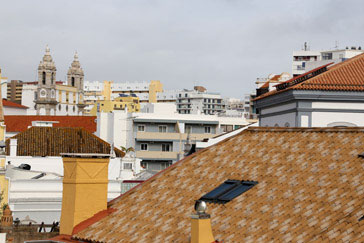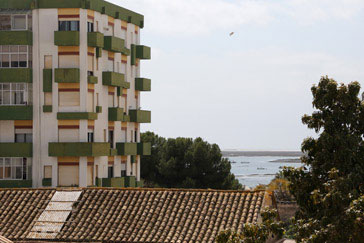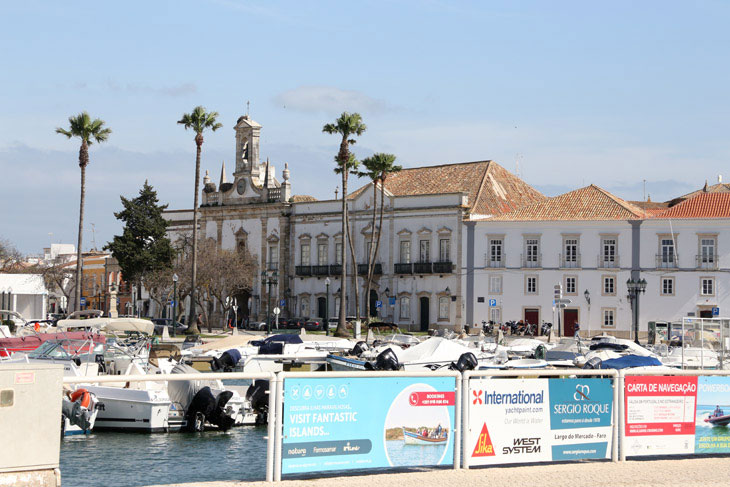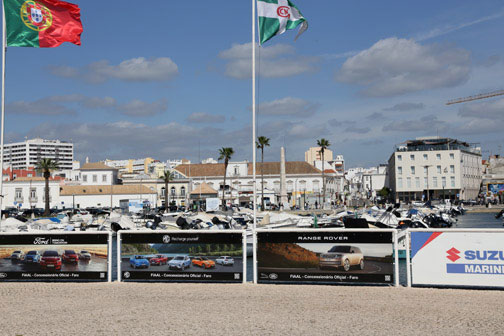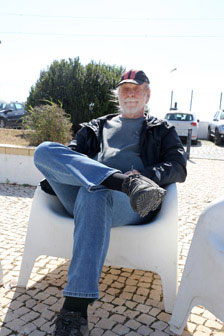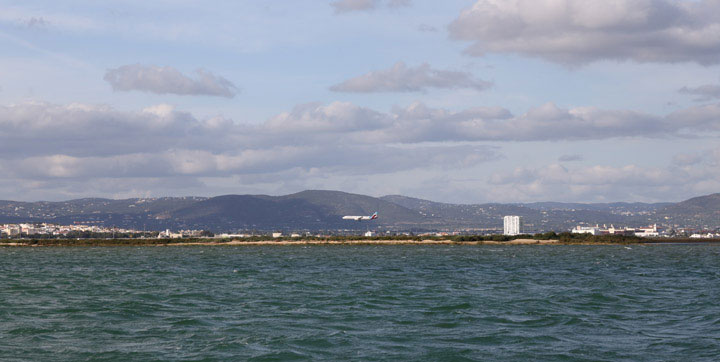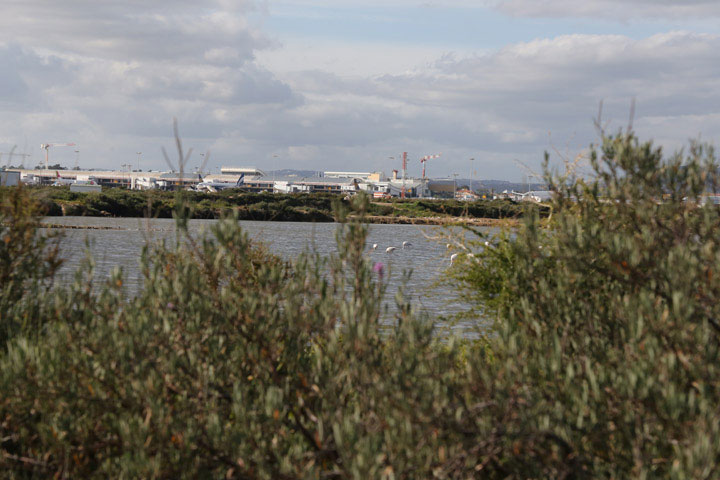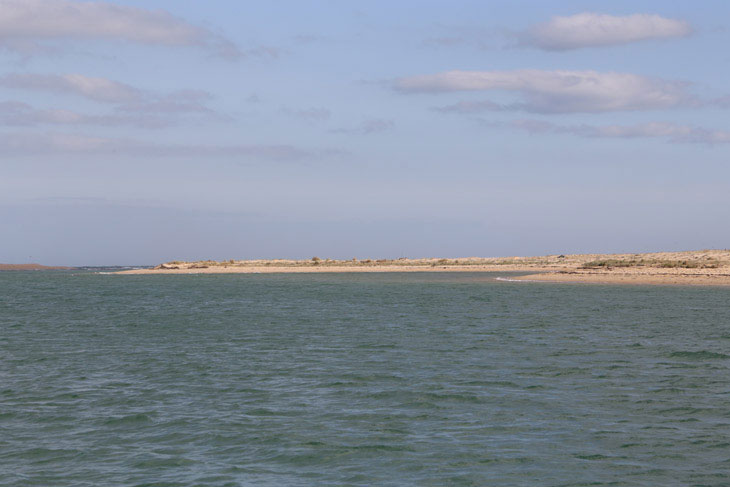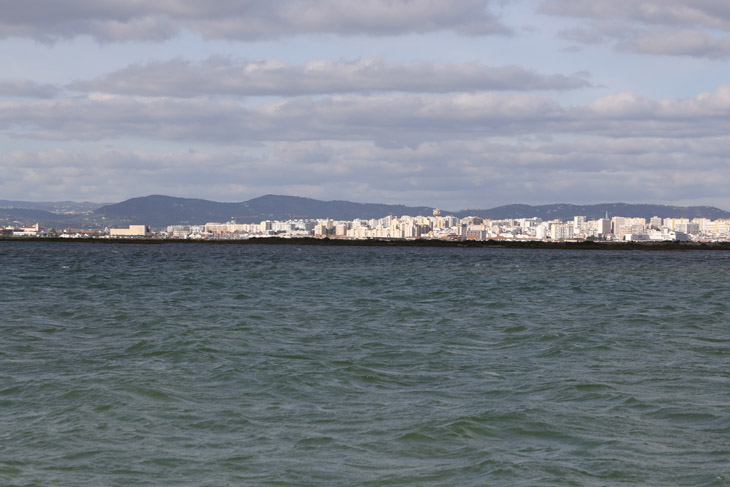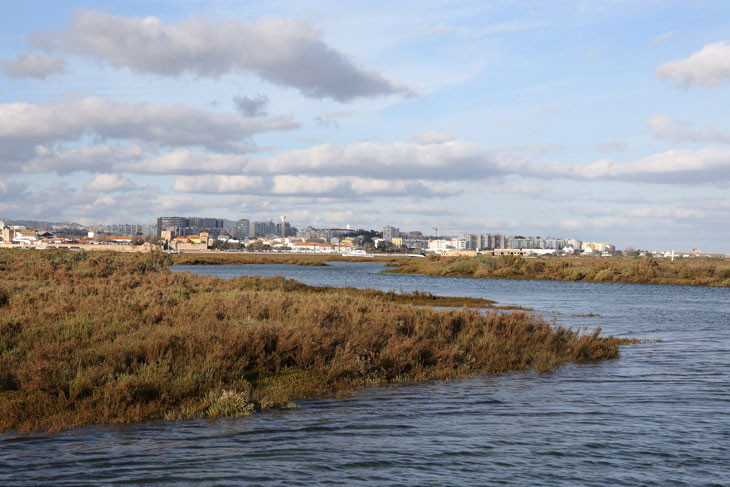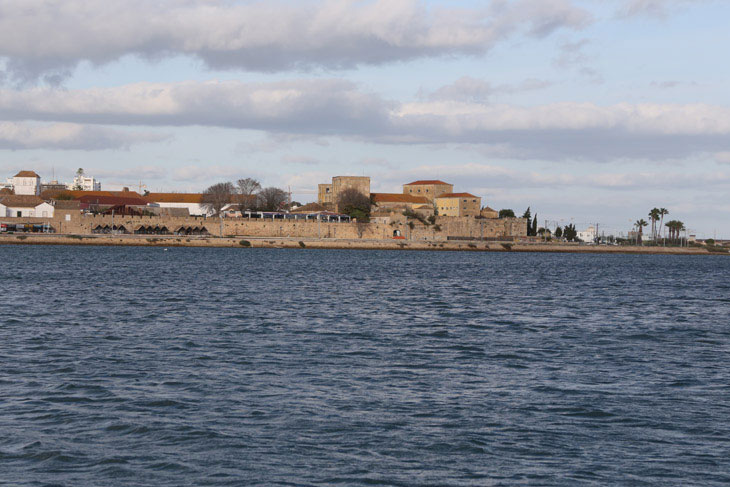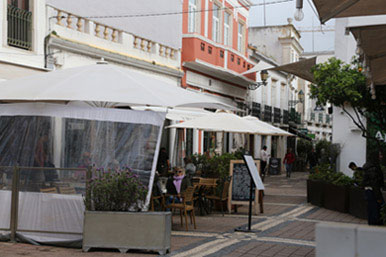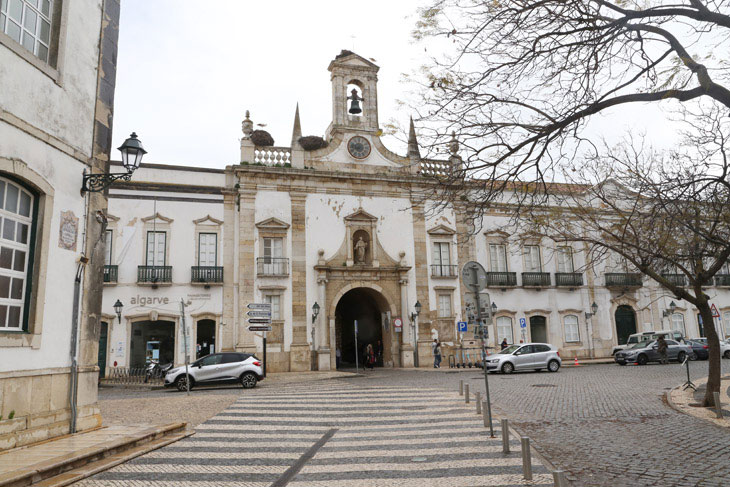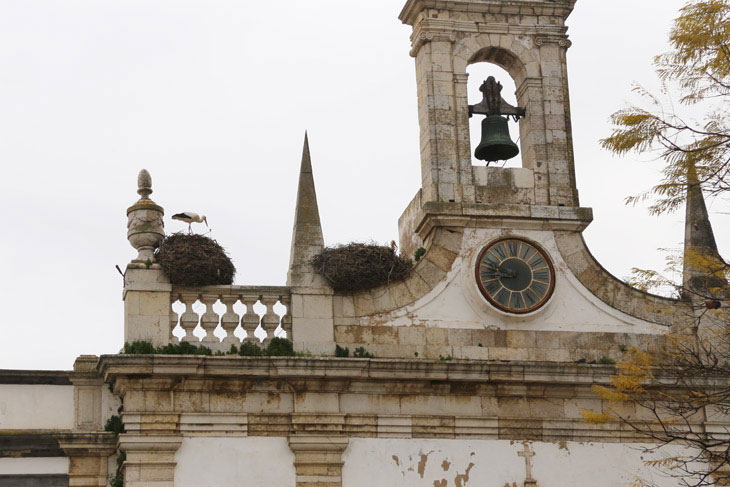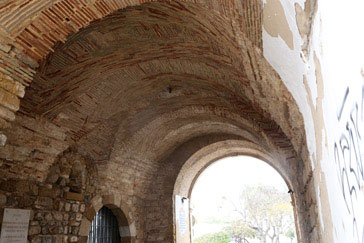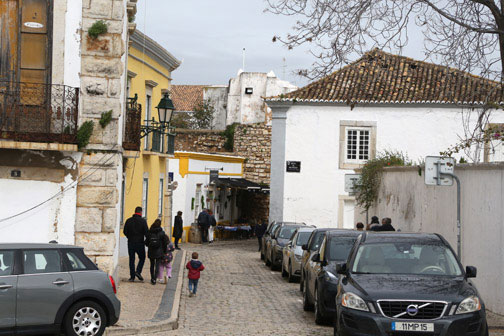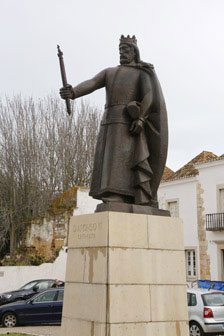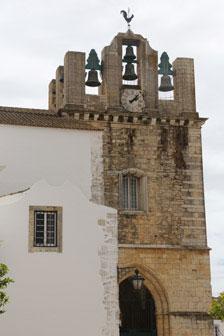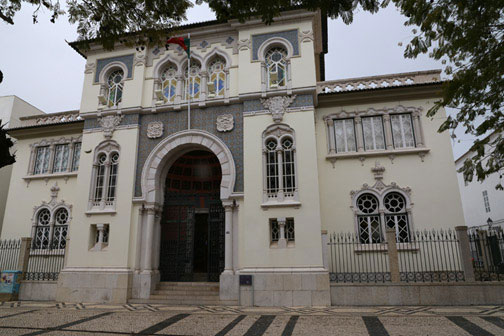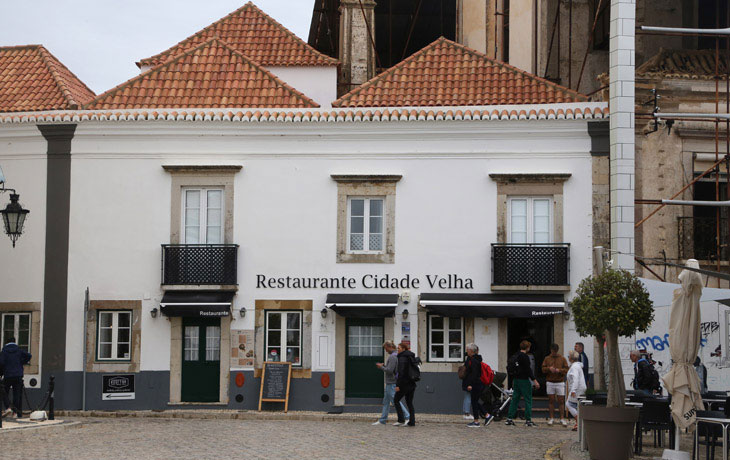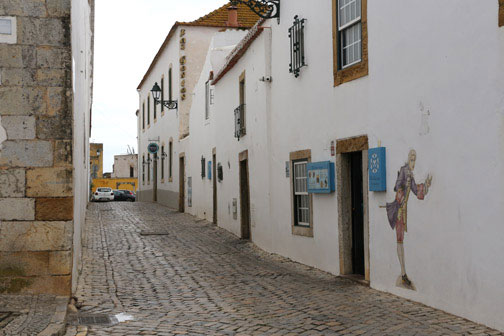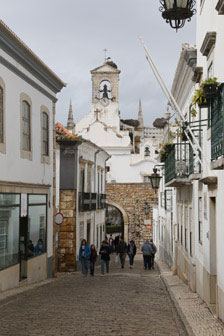Faro
In addition to visiting castles and museums and historical sites on our trips, we always try to work in some time
to enjoy parks and the natural environment. Although one of the friends we consulted about things to see in
Portugal told us that there were better ways to spend our time than visiting the heavily touristed South, we were
intrigued by descriptions of the rock formations of Lagos and the barrier islands of Ria Formosa Natural Park
At first it seemed like Lagos would be the place to stay, but in the end we decided to spend a couple of nights
in Faro, the capital of the Algarve. A high speed train from Lisbon goes directly to Faro and you can easily catch
local trains from the city to many other towns in the area. Although the city isn't known as a popular destination
for tourists, it has an interesting old town and a large, attractive marina.
We stayed in a nice studio apartment that was remarkably inexpensive about a block from the train station. This was
the view from our room. In the picture on the right, you can see the waters of Ria Formosa.
The park is a collection of saltmarshes, mudflats, and barrier islands that connects to the sea through six inlets. It
is an important nesting area for migratory birds so we booked a bird watching tour with an ecotourism company called
Natura. At first it seemed like we would have to take a train to Olhão for our tour, but after
an email exchange
with someone at the company, we were told that a boat would be leaving in the late afternoon from the marina in Faro.
We arrived early and sat in the warm sun awaiting our tour.
Our guide finally appeared and led us and a Dutch couple across the highway and down a long series of docks to a
small boat. At first, it was pleasant cruising around the mudflats spotting various types of birds. The Dutch man
was very serious about bird watching so he and the guide happily traded stories about various bird sightings while
we just enjoyed being out on the water.
Our guide explained that Ria Formosa is a "Natural" park rather than a "National" park because the standards for
protecting birds in a National Park cannot be met due to the proximity of the Faro airport. Since the airport is
important for tourism, it isn't likely to be relocated. Here's a picture of a plane coming in for a landing.
These flamingos feeding near the runway were unperturbed.
We sailed out to this barrier island where the guide offered to stop and let us walk around. The Dutch couple
briefly considered this option until they realized there was no dock so they would have to step into the water.
We all opted to stay on the boat and carry on.
At this point, we turned back towards the city, and the trip became much less pleasant. The wind blew in our faces,
and the tide was against us. We were cold and damp and longing for a drink and a hot meal by the time we finally
docked back at the marina.
Here are some more pictures of Faro taken from the boat.
After docking, we headed straight to our favorite Faro restaurant - an Italian place we had discovered on our
first day in the city.
That night, the wind continued to roar and the temperature dropped. Heavy showers descended every couple of hours.
We had hoped to catch a train from Faro to the scenic town of Tavira during our stay, but considering the bad weather,
it wouldn't have been a whole lot of fun. Instead, we contented ourselves with an exploration of Faro's old town
between showers.
This is the main gateway to the walled old town - the Arca da Vila. It was built in 1812 over one of the old gates
from the Moorish occupation.
One of the things I loved about Faro is the storks that nest on the tops of buildings and street lights.
Here are some other pictures we took that day.
